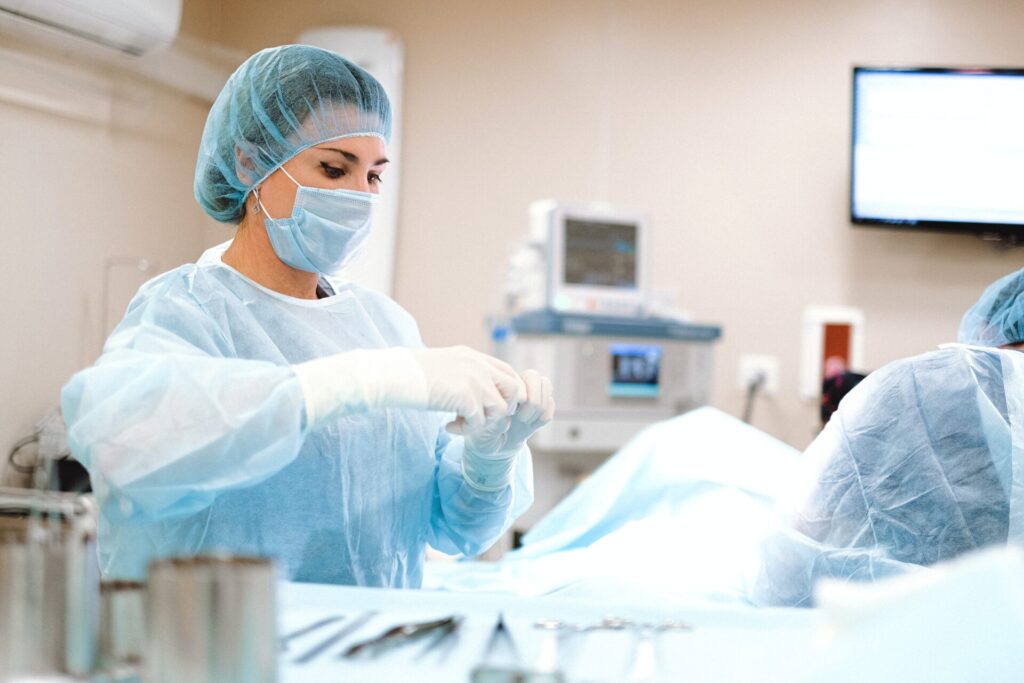How Physical Therapy Helps After Cervical Fusion
If you’re living with a condition such as cervical spine degenerative disc disease, herniated discs, fractures, or other structural problems that result in the need for cervical fusion surgery, physical therapy should be part of your recovery plan. Physical therapy is an effective treatment for many different types of issues and can help restore motion to stiff or weak muscles after any type of neck surgery. In this post, we’ll explore how physical therapy helps after cervical fusion so you can make informed decisions about your healthcare options.
Understand the Basics of Cervical Fusion and What it Entails
Cervical fusion, also known as cervical spinal fusion, is a surgical procedure aimed at fusing two or more vertebral bones in the neck. This is typically done to eliminate movement between the vertebrae and reduce the related pain. The procedure involves using bone grafts, metal plates, screws, or cages to hold the vertebrae together, allowing them to eventually fuse into a single bone. While cervical fusion is a relatively common procedure, it does carry risks, such as infection, bleeding, and nerve damage. Understanding the basics of cervical fusion and what it entails can help those considering this procedure make informed decisions about their health.
The Benefits of Physical Therapy After Cervical Fusion
Cervical fusion is a complex surgical procedure used to treat neck pain caused by a degenerative disc disease or injury. The procedure involves fusing two or more vertebrae in the neck to prevent painful movement between them. However, the recovery process after surgery can be a challenge. That’s where physical therapy comes in. Physical therapy is a crucial element of the healing process after cervical fusion. It helps patients regain strength, flexibility, and mobility in their neck and spine. Physical therapy also reduces pain and inflammation, improves circulation, and restores normal movement to the affected area. With the guidance of a physical therapist, patients can recover faster and return to their daily activities with confidence. Overall, physical therapy is an effective tool to help patients achieve a successful outcome after cervical fusion surgery.
Stretching and Strengthening Exercises to Improve Range of Motion
Stretching and strengthening exercises are crucial components of improving your range of motion. By incorporating these exercises into your daily routine, you can increase your flexibility and strengthen the muscles that provide stability to your joints. Stretching helps to elongate the muscles and prevents them from getting tight while strengthening exercises build up the muscles surrounding the joints to help support and protect them. Whether you are an athlete looking to improve your performance or simply want to improve your overall health and well-being, incorporating stretching and strengthening exercises into your routine is an important step toward achieving your goals. So why wait? Get started today and take the first step towards a more flexible and functional body.
Posture Improvement Techniques to Reduce Pain and Recovery Time
Maintaining good posture is essential for maintaining a healthy body and reducing the risk of pain and injury. Poor posture can lead to a range of problems, including back pain, neck pain, and headaches. Thankfully, there are many techniques you can use to improve your posture and reduce your risk of pain and injury. Some of the most effective techniques include practicing good posture throughout the day, stretching regularly, and strengthening your core muscles. By incorporating these simple techniques into your daily routine, you can help improve your posture, reduce your risk of pain and injury, and speed up your recovery time if you do experience any pain or discomfort.
Massage Therapy to Help with Nerve Pain and Stress
In today’s fast-paced world, it’s no wonder stress and nerve pain are common concerns for many. Luckily, massage therapy can provide relief for both of these ailments. With its soothing touch and gentle techniques, massage therapy can help reduce stress levels and promote relaxation. But the benefits don’t stop there; massage therapy can also help alleviate nerve pain by targeting the affected areas and increasing blood flow to promote healing. So why not give this ancient practice a try and see the transformative effects for yourself? It just may be the key to unlocking a stress-free and pain-free life.
Tips for Choosing the Right Physical Therapist for Your Needs
Choosing the right physical therapist can be an important decision when it comes to reaching your health goals. It’s not just about finding someone who is qualified, but also someone who you feel comfortable with and who understands your unique needs. One important tip is to do your research and read reviews from other patients, as this can give you insight into how different therapists work with their clients. Additionally, take the time to meet with potential therapists and ask questions about their experience and approach to treatment. By being proactive and doing your homework, you can find the right physical therapist who can help you achieve optimal health and well-being.
Conclusion
Cervical fusion is a major medical procedure that can have a considerable impact on your life. It is important to take extra care of your body and health after the surgery to ensure that your recovery goes smoothly. Investing in physical therapy, exercise, posture improvement, massage therapy, and other treatments can help you along your road to recovery. The key to finding the right physical therapy for you is to do your research and ask potential candidates about their experience with cervical fusion patients. With the right specialist, you can make sure that all of the important information and techniques are taken into account during your treatment for a safe and healthy recovery.

